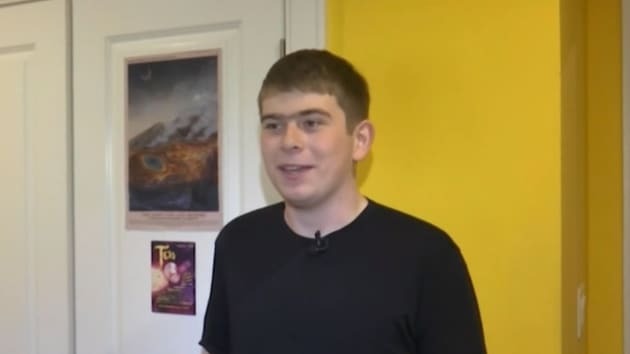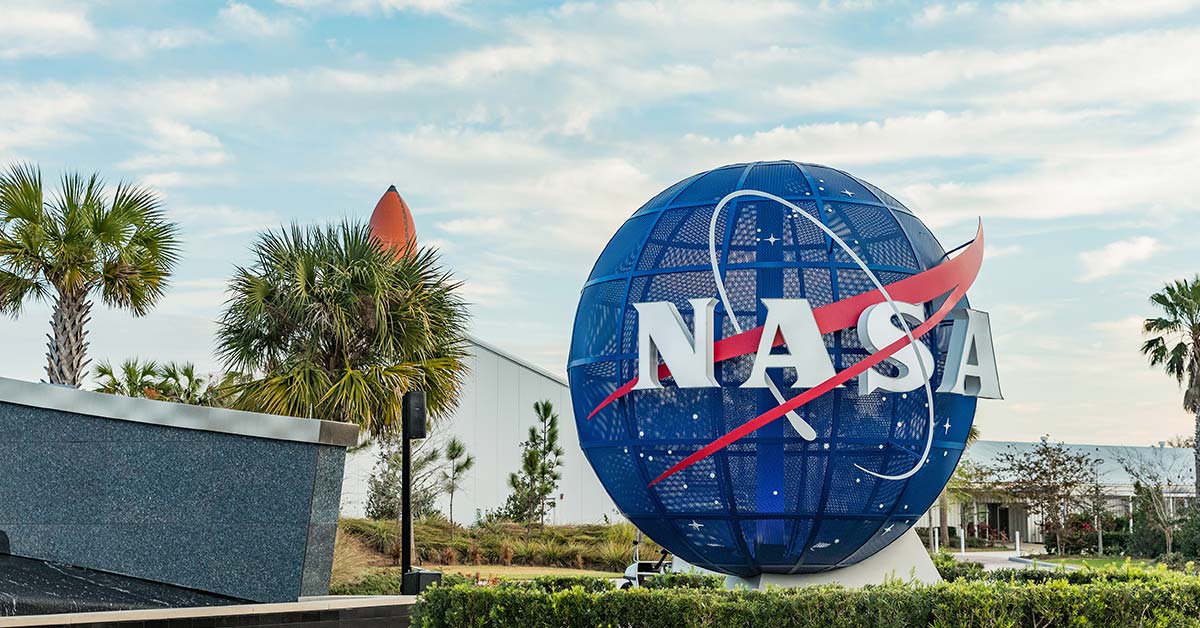A Premiere Daily Highlight Story: Sometimes there are stories that are just too amazing and note-worthy to keep locked away. That’s why we scour the archives and bring some of them back to experience again. They may surprise you, make you smile, or even shed a tear, but they’re always meant to add a little extra to your day.
NASA usually has a track record of recognizing heavenly bodies pretty fast. But, what happens when you recognize a planet on your third day of an internship? This is exactly what happened to Wolf Cukier of Scarsdale High School, New York. When he landed a two-month internship with the institution in 2019, he had to move to the Goddard Space Flight Center. And what an internship it turned out to be for him!
His initial assignment was to check for variations in star brightness. The pictures were captured by the administration’s Transiting Exoplanet Survey Satellite, also known as TESS. This constituted a major part of the Planet Hunters TESS citizen science project.
An Internship With NASA- How Could One Not Be Excited?
With three days in his internship with NASA, Cukier had a new planet. This news was announced by the institution just a week after the discovery. First, they had to confirm the work of the teenager. After that, they had to submit the paper that this high schooler co-authored. The planet was then named ‘TOI 1338b’ at the American Astronomical Society Meeting.

Cukier informed NASA:
“I was looking through the data for everything the volunteers had flagged as an eclipsing binary, a system where two stars circle around each other, and from our view eclipse each other every orbit. About three days into my internship, I saw a signal from a system called TOI 1338. At first, I thought it was a stellar eclipse, but the timing was wrong. It turned out to be a planet.”
He also spoke about his discovery with NBC 4 New York, where he stated:
“I noticed a dip, or a transit, from the TOI 1338 system, and that was the first signal of a planet. I first saw the initial dip and thought, ‘Oh that looked cool,’ but then when I looked at the full data from the telescope at that star, I and my mentor also noticed, three different dips in the system.”
As stated by NASA, the planet is around 7 times bigger than Earth. It is located in the Pictor constellation and is about 1,300 light-years away from us. For context, the sun is seven and nine-light minutes away.
Cukier’s Baby- Planet TOI 1338b
Cukier’s TOI 1338b is one of the first planets captured by the TESS module. This is also considered a circumbinary planet. TOI 1338b gets that name due to it orbiting two different stars. The two stars move around each other every 15 days. Incidentally, one of the stars is 10% larger than our Sun. In an interview with News 12, the NASA intern actually compared his findings to Star Wars. “I discovered a planet. It has two stars which it orbits around,” he said. “So, if you think to Luke’s homeworld, Tatooine, from ‘Star Wars,’ it’s like that. Every sunset, there’s gonna be two stars setting.”
Now, let’s move towards real-life applications. Does his finding guarantee a job at NASA? Cukier replied:
“I’ve no idea about NASA’s hiring practices but it can’t hurt! It’s a good thing to have on my CV. My mentor has been very supportive and excited. I think NASA is surprised with the amount of attention this has been getting.”
Goes without saying, the teenager had his sight set for the stars. After graduating high school, it inspired the teenager in his university endeavors. “When I’m there I’m planning to study physics and astrophysics. From there, a career in space research is appealing.”[2]
Read: 50 Years Ago NASA Sent a Map Into Space to Help Aliens Find Earth—Now They’ve Got An Awesome Update
Wolf Cukier- or A Young Galileo?
But back in 2019, he was still Wolf to his school- with slightly more fame. “I’ve had more congratulations over the past four days than I’ve had over the past couple of years combined. Everybody is incredibly excited. It’s a surreal experience.” In his interview with Space.com, the young NASA intern spoke about how he got an interest in science from the beginning.
“I’ve probably always been interested in science. My mom is trained as a geologist. She passed that love of science down to me … when I was in middle school, whenever we would get on a plane to go somewhere, my mom would get me a science magazine to read, and I think reading that helped pique my interest even more in science and, in particular, astronomy. And [science] just kind of always has been interesting to me.”
When asked about his choice of reading material, Cukier responded, “I think, usually, like a Scientific American and occasionally National Geographic. [I leaned more] towards the science-y articles in that.”
Securing An Internship With NASA- Does It Guarantee Employment?
Yet, we wonder- how did he get this fated opportunity to work with NASA? Cukier responds, “As part of my school, I signed up for the science research program, which basically provides a support structure for kids interested in doing research to find a mentor in order to start doing research. So, as part of this program, students are required to find a mentor, like an actually trained scientist or engineer in the field that they’re interested in to provide a project and help them through it.
He further states:
“So in order to continue in this program, to do research, I sent emails to various researchers in my field [of interest] throughout the country, and eventually I found someone who referred me to Ravi [Kopparapu, Research Scientist at NASA Goddard Space Flight Center] who was my mentor for the summer of 2018 at NASA. And then, this past summer, I was invited back, but Ravi had other travel stuff he had to do. So I worked with Veselin Kostov [Research Scientist at NASA GSFC, SETI Institute] this past summer, [when] the goal was to find one of these planets. And we just happened to find one pretty quickly.
The young NASA intern really showed up to work on his third day, and we can only hope that the discoveries didn’t end just there.
Keep Reading: NASA Is Tracking a Vast, Growing Anomaly in Earth’s Magnetic Field
Sources
- “17-year-old discovers planet 6.9 times larger than Earth on third day of internship with NASA.” CNBC. Abigail Johnson Hess. January 10 2020.
- “Meet the NASA intern who discovered a new planet on his third day.” BBC. Hannah Morrison. January 16, 2020.
- “Meet the 17-year-old who discovered an alien planet: A Q&A with high school student Wolf Cukier.” Space. Doris Elin Urrutia. February 25, 2020.

